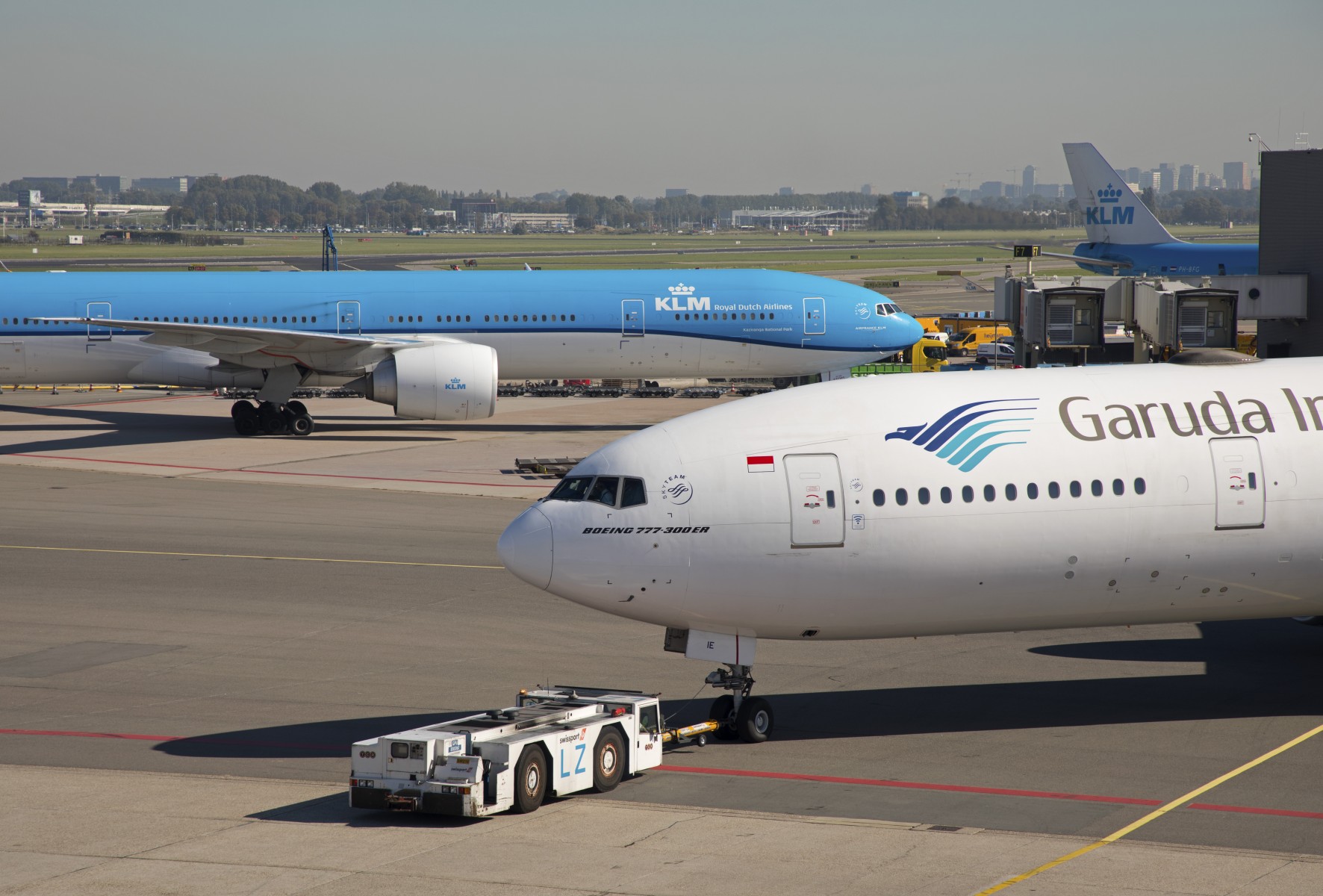Can airplanes taxi in reverse?
At some point in our lives, we all ask ourselves the same question: can you put a plane in reverse?
The answer is: yes, you can, but... no one ever does. Some aircraft can do a so-called ‘powerback’, but in most cases, airplanes either don’t have this technical capability. Most airplanes can taxi backwards by using reverse thrust. This entails directing the thrust produced by the plane’s jet engines forward, rather than backwards. This method is often used in jet aircraft to brake as quickly as possible after touchdown. It’s also used when making an emergency stop. In some countries, pilots can still taxi their aircraft backwards to their heart’s content, but you’ll never see this at Schiphol. And for good reasons.
Loud engines
Thrust reversal involves great forces, and produces an incredible amount of noise. To keep noise pollution to a minimum, we try to avoid roaring jet engines as much possible. An engine running at full thrust would also blow away any loose parts or people on the platform. Some might consider this a safety risk.
Cleanliness is next to lower maintenance costs
Reversing engine thrust leads to an increase in CO2 production. In addition, thrust reversal can only be used above a certain speed, because otherwise all kinds of dirt will get sucked into the engines. This dirt then causes increased wear and tear of both the engine and the aircraft.
All in all, plenty of reasons not to have airplanes taxiing in reverse.
Back it up!
So how do we move our airplanes backwards? We use a pushback tractor. This special vehicle uses a tow bar, which is attached to the nose wheel of the aircraft. Modern pushback tractors are able to lift the aircraft’s nose wheel, making connecting and disconnecting the tow bar much less time-consuming. Once the tow bar is connected, the tractor is able to push the plane back. Beep, beep, beep – jumbo jet coming through!

